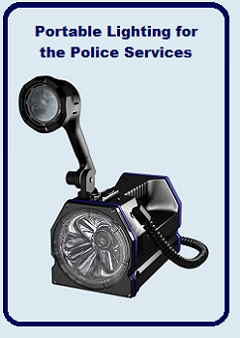Monthly Archives: December 2021
 Werrington Tunnel, an underground freight tunnel running beneath the East Coast Main Line near Peterborough, has been formally opened by Rail Minister Chris Heaton-Harris.
Werrington Tunnel, an underground freight tunnel running beneath the East Coast Main Line near Peterborough, has been formally opened by Rail Minister Chris Heaton-Harris.
A key step in the £1.2bn East Coast upgrade, the opening of the tunnel allows for freight services to be ran underneath the main rail artery, significantly improving passenger service reliability on the East Coast Main Line.
Easing congestion on the route will also allow the operation of more passenger trains, providing more seats between London and the North of England and Scotland.
The installation of the tunnel saw a UK engineering first, as the 11,000-tonne curved concrete tunnel was constructed alongside the East Coast Main Line in nine interconnected sections and then slid into place under the existing railway earlier this year.
At 155 metres long, 9.5 metres high and 5.1 metres high, with 1 metre thick walls, the Werrington Tunnel’s ‘concrete box’ weighs 1,000 tonnes more than the Eiffel Tower.
The tunnel was set in place in January 2021, with the new track then installed inside the tunnel in July. Work then continued to install the signalling system before vital testing of the new tunnel took place to enable trains to start using the infrastructure.
Rob McIntosh, Managing Director for Network Rail’s Eastern region, said: “From building the huge concrete tunnel onsite next to the East Coast Main Line, to pushing it into place in a UK first for engineering, to installing new track and signalling equipment to connect it to the existing lines – it’s been amazing to see the progress our teams have made on this ground-breaking project.
“Passengers travelling between London, Peterborough, the north of England and Scotland will benefit from faster, more reliable journeys as longer freight trains can now dive underneath the famous passenger route.
“I’m proud of our team’s brilliant response to the challenges of the Covid-19 pandemic and how they reached major milestones on the project when it was at its peak. Using innovative methods, we’ve also been able to avoid major disruption for passengers, as services have continued running throughout the majority of the work. We want to thank passengers as well as people in the community for their continued patience.”
Speaking as he officially opened the tunnel, Rail Minister Chris Heaton-Harris said: “This country’s railways have long been home to marvels of engineering and the new Werrington Tunnel shows that we are continuing that proud tradition.
“Opening this new section of railway marks the end of a project which saw Network Rail engineers deliver an incredible feat installing an 11,000-tonne concrete tunnel, freeing up tracks and unlocking new opportunities for rail freight.”
The completion of the Werrington Tunnel project will also help pave the way for the major infrastructure rollout planned across the North of England and Midlands, as announced in the recently released Integrated Rail Plan (IRP).
This includes £96bn worth of investment into the railways to help deliver real and meaningful improvements to communities, supporting economic growth by transforming both east-west and north-south links.
According to the latest government data, about 29 percent of the UK train fleet still runs on diesel and freight trains run almost entirely on it.
The government claims it is on track “to meet the ambition of removing all diesel-only trains from the network by 2040”.
Electric trains emit 60 percent less carbon than their diesel counterparts, but only 42 percent of the UK rail network is currently electrified, according to official data. This leaves the UK far behind European neighbours, such as the Netherlands, where 76 percent of the network is electrified. Lumo’s new fully electric London-Edinburgh service launched in November.
Some train operators are transitioning via hybrid models. Porterbrook, in collaboration with Rolls-Royce recently announced a hybrid battery-diesel train for services in the Midlands run by Chiltern Railways.
Plans are also underway to produce trains that run on hydrogen. French train manufacturer Alstom is developing the UK’s first-ever fleet of new hydrogen trains, as opposed to rolling stock that has been remodelled.

A hydrogen-powered train was showcased at COP26 recently. Rail is already the lowest emission transport mode, but train operators are confident that hydrogen trains can improve on this.
Sadly, the recent surge in electricity prices has forced some electric-run trains to revert to diesel locomotives. Trade body Rail Freight Group (RFG) insists that this a temporary set-back and looks forward to more investment in electric locomotives.
The head of Britain’s Rail Industry Decarbonisation Task Force and railway safety authority RSSB has said “Britain is leading the world on setting clear targets to reduce carbon, and so it’s critical that all industries play their part”. “Rail is ahead of the curve on the decarbonisation agenda, and our report shows that we can align with the government’s policy for the UK economy to be net carbon zero by 2050. We will need to fully exploit electrification, hydrogen and battery power to make this happen, but we also need all transport sectors to fully comprehend the challenge of decarbonisation.”
There is no doubt the rail industry is working hard to achieve the target of being diesel-free by 2040, and at the moment the future is looking good.
Whatever the trains are running on, White Knight will still be making their reliable range of Lanterns and Signal Lamps for the Rail Industry.


